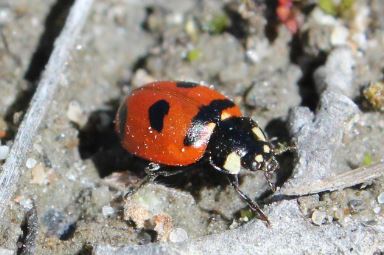Vegetation and moisture shape Arctic arthropod communities
ARC researchers document small scale variation in Arctic spider and beetle communities in fen, heath and tundra habitats

Arctic arthropod communities are traditionally perceived as simple and species poor. However, PhD student Rikke R Hansen and her colleagues have recently documented variation in biodiversity and composition of beetle and spider communities down to a scale of a few meters. Species assemblages vary considerably depending on vegetation height and soil moisture.
The study was carried out along a fjord gradient in southwest Greenland, where the researchers sampled arthropods in different habitats: fen, dwarf shrub heath, and tall shrub tundra.
The analysis of 2.547 individuals belonging to 47 species showed that each habitat hosted significant indicator species. Species richness and diversity were highest in heath and lowest in fen habitats. The composition of spider and beetle assemblages was linked to changes in soil moisture and vegetation height, as well as geographic location.
Climate change is expected to cause shrubification and wetland deterioration in the Arctic, changing the living conditions of many organisms. Spiders are considered as useful indicator species to detect environmental change due to climate change. Therefore, we need improved knowledge on species occurrence in different environments, responses to changing habitats, and spatial variability along environmental gradients, like soil moisture.
This study is part of Rikke R Hansen’s PhD dissertation, which she is currently finalizing at Arctic Research Centre. In the future, she wants to carry out more detailed studies of species distribution and habitat preferences to be able to foresee how Arctic arthropod communities respond to climate change.
Read the article:
Hansen RR, Hansen OLP, Bowden JJ, Treier UA, Normand S & Høye T 2016. Meter scale variation in shrub dominance and soil moisture structure Arctic arthropod communities. PeerJ 4:e2224
